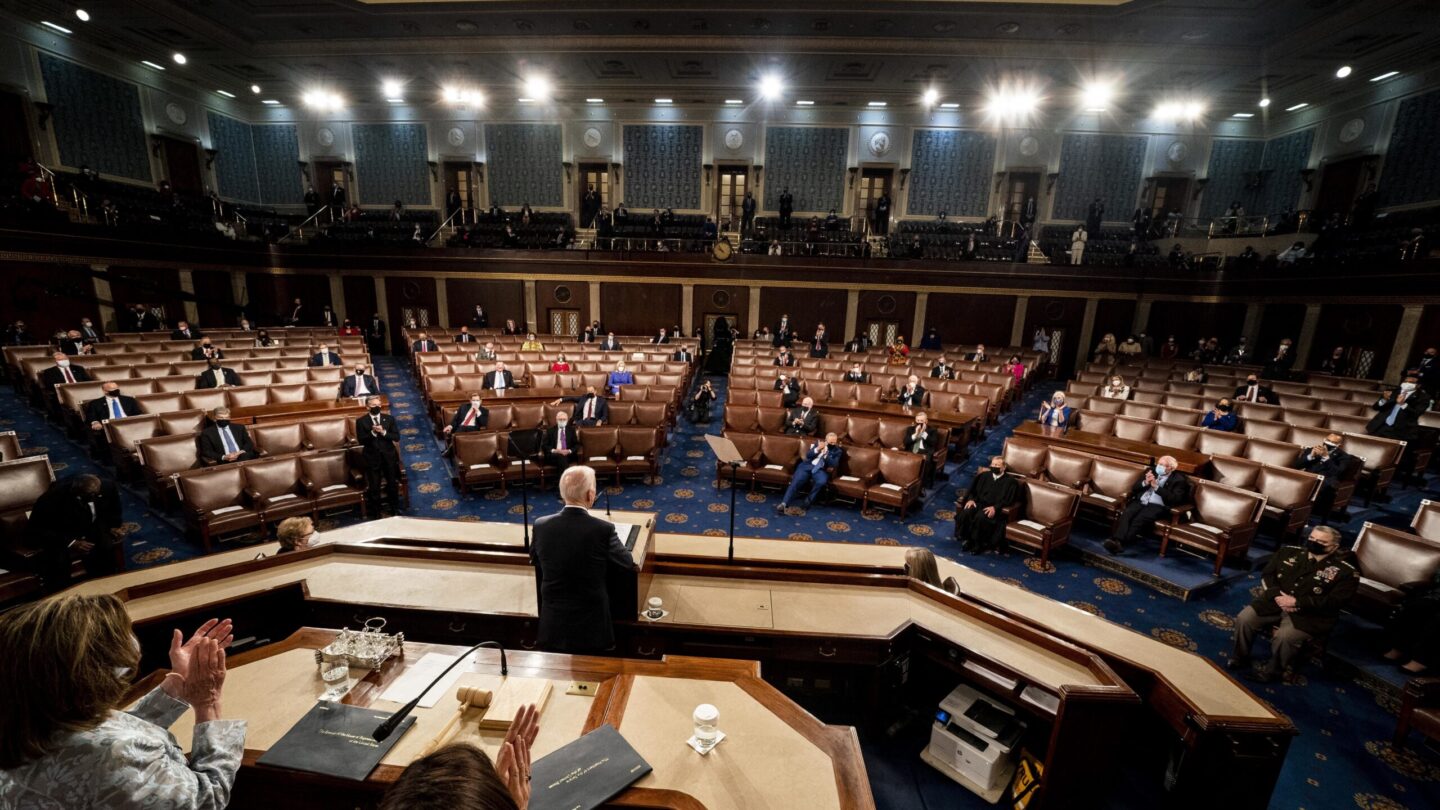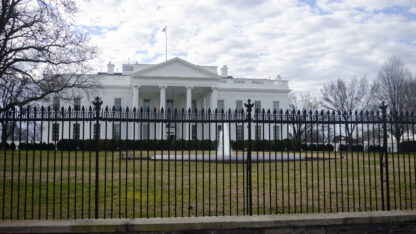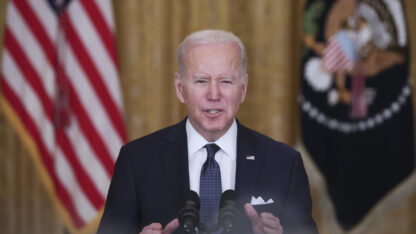No moment in America’s yearly political calendar is so grand or so daunting as the State of the Union address, a speech the president usually delivers to a joint session of Congress early in the year.
This year, President Biden is due to deliver his first State of the Union address on Tuesday. The Constitution requires the president to report on “the state of the union” and to do it from “from time to time.” It has been customary for more than a century for the president to do this with a live speech before a joint session of Congress. Nearly all the members of the Cabinet and Supreme Court attend as well.
Now and then, the timing set by tradition has coincided with a period of high stress for the nation — and especially for the president himself. And when things are especially fraught, the tension and drama in the chamber in the Capitol can be almost palpable.
But even when under maximum pressure, presidents have viewed the speech as a unique opportunity to make their case to the rest of the government, to the nation as a whole and to the wider world as well.
On Tuesday, Biden is expected to use this unique opportunity to elaborate on the U.S. response to Russia’s invasion of Ukraine, the most severe blow to the security of Europe and the NATO alliance in the 77 years since World War II.
While Americans are struggling with a two-year-old pandemic and economic stresses of their own, the return of war in Europe adds a dire portent to the proceedings not seen in many years.
The last time war clouds were this dark over a State of the Union speech was in January of 2003, when President George W. Bush used the occasion to make a case for invading Iraq. That invasion would happen less than two months later, overthrowing the strongman dictator Saddam Hussein. Bush argued that the Iraqi regime had been seeking a nuclear weapon and had developed other “weapons of mass destruction.” He said this meant the U.S. needed to use all means available, including invasion, to neutralize this threat.
In one sense, Bush was preaching to the choir. Congress had already bought into this analysis in the fall of 2002, approving an authorization for the use of military force (AUMF) against Iraq. Some Democratic senators who supported this AUMF later regretted and disowned that vote.
But at the time, the memory of the terror attacks of Sept. 11, 2001 was still fresh and Bush’s “war on terror” was still broadly popular. His approval score in the Gallup Poll had declined from its peak of 90% but was still historically high.
Bush had also devoted his 2002 State of the Union largely to his “axis of evil” analysis, identifying Iran, North Korea and Iraq as “outlaw regimes that seek and possess nuclear, chemical and biological weapons.”
The particulars of Bush’s appeal in the 2003 speech, however, would come back to haunt him. He leaned heavily on an allegation that Iraq “recently sought significant quantities of uranium from Africa.”
That particular bit of intelligence, among others, was later discredited. But by that time the U.S. had invaded and occupied Iraq, overthrowing Saddam Hussein but finding no weapons of mass destruction or evidence of their imminent development.
War and the State of the Union
War had also loomed in the State of the Union given by President Bill Clinton in 1999, when war had broken out in the Balkans over the Serbian province of Kosovo. Clinton portrayed the “ethnic cleansing” underway in Kosovo, displacing more than a million Muslim residents there, as a form of genocide. U.S. aircraft would participate in a NATO effort to punish Serbia and force a settlement.
In the decades of the Cold War, presidential State of the Union addresses regularly referred to the need to maintain military strength (both nuclear and conventional) to deter the ambitions of “global communism.” In the 1960s and early 1970s, this recurring element in the speech featured a specific message on the war in Vietnam. In these years, presidents combined an assertion of the war’s importance to national security with vague promises to end it.
Lyndon Johnson, who ordered the largest escalation of the war in 1965, concentrated his 1966 State of the Union address on defending that decision. In effect, he acknowledged the degree to which the war had upstaged all the other events of the previous year, including enactment of the Voting Rights Act, Medicare and Medicaid and a host of other “Great Society” programs he had first laid out in his previous State of the Union speech a year earlier.
Impeachment in the air
Three presidents in the last 50 years have come to the Capitol to deliver a State of the Union with impeachment hanging over them. Two — Bill Clinton in 1998 and Donald Trump in 2020 — were addressing the very House members who just weeks earlier had voted to impeach them. These presidents were also addressing the same members of the Senate who were even then weighing their votes to convict or acquit.
Yet neither Clinton in 1998 nor Trump in 2020 mentioned any of these facts in their State of the Union addresses. Both addressed the joint session in evident confidence that the Senate would not muster the necessary two-thirds vote to remove them. That turned out to be true both times.
Both Clinton and Trump preferred to act as though impeachment was not important to the nation as a whole. The unmistakable subtext in each case was the president’s need to convince the nation as a whole that impeachment was not important.
But Trump’s speech also had the spectacle of House Speaker Nancy Pelosi standing behind him and angrily shredding the text of his speech after he had concluded. Trump appeared to have refused to shake her hand he arrived at the dais.
A slightly different tack was chosen by President Richard Nixon in January of 1974, when he delivered the second State of the Union of his second term. Nixon did not dwell on the scandal and the multi-front investigation that had already caused several in his inner circle to resign. But he addressed the issue by telling Congress “one year of Watergate is enough.” That plea fell on deaf ears.
“Watergate” was a catch-all term for the ongoing investigation of various illegal acts by Nixon’s 1972 reelection campaign and for subsequent White House efforts to cover up those crimes. The Senate’s “Watergate committee” had already held weeks of televised hearings on the widening scandal, and Nixon was actively resisting subpoenas for tape recordings of his Oval Office meetings.
In the months that followed, impeachment hearings went forward in the House, the Supreme Court ordered the tapes released and Nixon resigned in August of 1974.
Moments of partisan drama
There have also been times when a president addressed a Congress that had been substantially reconstituted in the previous November’s election. In 2011, for example, President Barack Obama faced a Congress with many new faces. There were 95 new members in the House, 85 of them Republicans (three-fourths of whom had replaced Democrats in their districts). There were 13 new senators, all but one of them Republicans, and half of them had taken seats from the Democrats.
Something similar had happened to Bush just four years earlier, when in 2007 he found himself facing Democratic majorities in both House and Senate after having his own party in control of both since 2003.
Clinton had faced a turnaround that was arguably even more dramatic when he came to deliver his 1995 State of the Union. The comfortable majorities he had in both chambers for his first two years in office were buried in the Republican landslide of November 1994.
Clinton was looking at the first Republican-majority House in 40 years, led by an aggressive new speaker named Newt Gingrich, who sat in a chair behind the president. The newly Republican Senate’s leader in 1995 was Bob Dole, who would be the GOP nominee against Clinton the following year.
In that one election, Republicans took over the majority of House seats and Senate seats (and governorships) in the South for the first time since Reconstruction. Republicans have maintained this edge in the region ever since.
Other historical notes
It will be widely noted that next week’s State of the Union will be the first in U.S. history when women occupy both the constitutional offices that entitle them to be seated behind the president. As vice president, Kamala Harris is also the formal president of the Senate, so she will be seated beside Pelosi, who first welcomed a president to the chamber in that role in 2007.
(Both women were in office and in place when Biden spoke to a joint session in April 2021, but that was more of an introduction and in any event not a formal State of the Union report.)
Over the years, there have been many dramatic and even pivotal moments associated with the State of the Union report. In 1862, when the Civil War was nearing the end of its second year, Abraham Lincoln told the Congress:
“The fiery trial through which we pass will light us down in honor or dishonor to the [last] generation… In giving freedom to the slave we assure freedom to the free – honorable a like in what we give and what we preserve. We shall nobly save or meanly lose the last best hope of earth.”
But that report was not heard by anyone at the time of its delivery because it was a written document and not a speech, as was the custom of the era.
George Washington delivered his reports as speeches, but in the 19th century the prevailing format became a written document. Woodrow Wilson broke that pattern with his first State of the Union in 1913, near the end of his first year in office. He continued his in-person tradition until a stroke made that impossible in 1919. Since then, every president has delivered the speech live to a joint session.
Radio began broadcasting the speeches live with President Calvin Coolidge in 1923 and they have been televised since President Harry Truman in 1947. Johnson’s speech in 1965 was the first to be televised in prime time.
Copyright 2022 NPR. To see more, visit https://www.npr.org.
9(MDAxODM0MDY4MDEyMTY4NDA3MzI3YjkzMw004))

9(MDAxODM0MDY4MDEyMTY4NDA3MzI3YjkzMw004))








